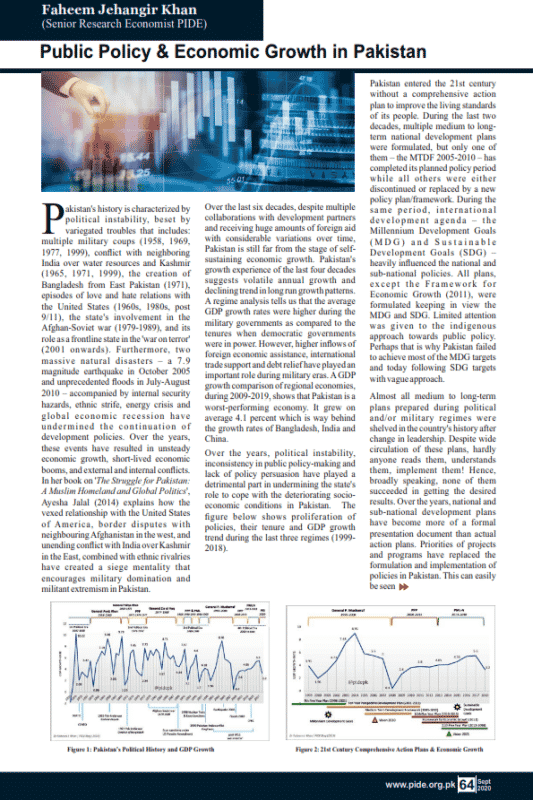
Pakistan Institute of Development Economics
- Home
Our Portals
MenuMenuMenuMenuMenuMenuMenu - ResearchMenuMenuMenuMenuMenuMenuMenu
- Discourse
- The PDR
- Our Researchers
- Academics
- Degree Verification
- Thesis Portal
- Our Portals
Public Policy & Economic Growth in Pakistan (P & R Vol.1 Issue 1)
Pakistan’s history is characterized by political instability, beset by veriegatd troubles that included: multiple military coups (1958, 1969, 1977, 1999), conflict with neighboring India over water resources and Kashmir (1965, 1971, 1999), the creation of Bangladesh from East Pakistan (1971), episodes of love and hate relations with the United States (1960s, 1980s, post 9/11), the state’s involvement in the Afghan-Soviet war (1979-1989), and its role as a frontline state in the ‘war on terror’ (2001 onwards). Furthermore, two massive natural disasters – a 7.9 magnitude earthquake in October 2005 and unprecedented floods in July-August 2010 – accompanied by internal security hazards, ethnic strife, energy crisis and global economic recession have undermined the continuation of development policies. Over the years, these events have resulted in unsteady economic growth, short-lived economic booms, and external and internal conflicts. In her book on ‘The Struggle for Pakistan: A Muslim Homeland and Global Politics’, Ayesha Jalal (2014) explains how the vexed relationship with the United States of America, border disputes with neighbouring Afghanistan in the west, and unending conflict with India over Kashmir in the East, combined with ethnic rivalries have created a siege mentality that encourages military domination and militant extremism in Pakistan.



